Delving into the captivating world of Amsterdam weather, this exploration unveils the city’s unique climate, cultural influences, and impact on daily life. From historical patterns to future projections, we embark on a journey to understand the intricate tapestry woven by Amsterdam’s weather.
As we navigate through this comprehensive guide, we’ll delve into the city’s predominant weather patterns, analyze climate trends and projections, and explore the accuracy of weather forecasting. We’ll uncover the impact of weather on tourism, transportation, and other sectors, while also examining its cultural significance and influence on art and literature.
Weather Patterns and Historical Data

Amsterdam’s weather is characterized by mild, temperate conditions year-round, influenced by its coastal location and proximity to the North Sea. The city experiences distinct seasonal variations, each with its unique weather patterns and climatic conditions.
Temperature
- Average annual temperature: 11.1°C (52°F)
- Warmest month: August (average temperature: 18.9°C / 66°F)
- Coldest month: January (average temperature: 3.4°C / 38°F)
- Average daily temperature range: 10°C (50°F)
Precipitation
- Average annual precipitation: 839 mm (33 in)
- Wettest month: October (average precipitation: 96 mm / 3.8 in)
- Driest month: April (average precipitation: 41 mm / 1.6 in)
- Rain occurs on average 120 days per year
Humidity
- Average annual relative humidity: 80%
- Highest humidity: December – February (average relative humidity: 85%)
- Lowest humidity: April – May (average relative humidity: 75%)
Seasonal Variations
Spring (March-May): Mild temperatures, occasional rain, and increasing daylight hours.
Summer (June-August): Warm and sunny, with occasional thunderstorms and high humidity.
Autumn (September-November): Cooler temperatures, increased precipitation, and shorter days.
Winter (December-February): Cold, damp, and cloudy, with occasional snowfall and freezing temperatures.
Extreme Weather Events
Amsterdam is not immune to extreme weather events, although they are relatively rare. Notable events include:
- Heatwaves: In 2019, Amsterdam experienced a record-breaking heatwave with temperatures reaching 36°C (97°F).
- Flooding: The city is prone to flooding due to its low-lying coastal location and heavy rainfall. In 1953, a severe storm surge caused widespread flooding, resulting in significant damage and loss of life.
- Storms: Amsterdam is occasionally affected by strong storms and winds, especially during the winter months. In 2020, a severe storm caused widespread power outages and damage to buildings.
Climate Trends and Projections
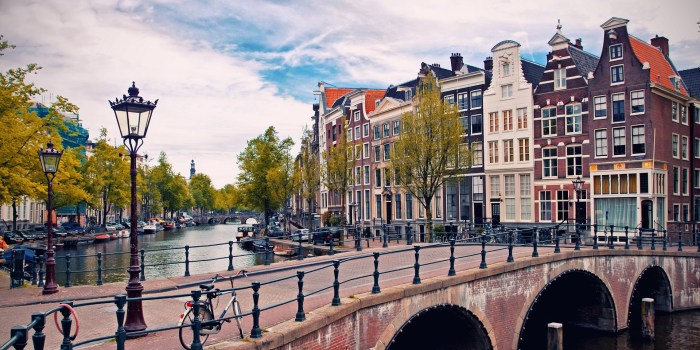
The effects of climate change on Amsterdam’s weather are becoming increasingly evident. Rising temperatures, altered precipitation patterns, and more frequent extreme weather events are among the observed and projected impacts.
Temperature Trends
Temperatures in Amsterdam have been steadily increasing over the past few decades. The average annual temperature has risen by about 1 degree Celsius since the 1950s, and this trend is expected to continue in the future.
Precipitation Patterns
Rainfall patterns in Amsterdam are also changing. The city is experiencing more intense and frequent rainfall events, while the number of days with no rainfall is also increasing.
Extreme Weather Events
Extreme weather events, such as heat waves, droughts, and floods, are becoming more common in Amsterdam. These events can have a significant impact on the city’s infrastructure, economy, and public health.
Future Projections
Climate models project that the climate in Amsterdam will continue to change in the future. Temperatures are expected to continue to rise, and precipitation patterns are expected to become even more variable.
Weather Forecasting and Accuracy
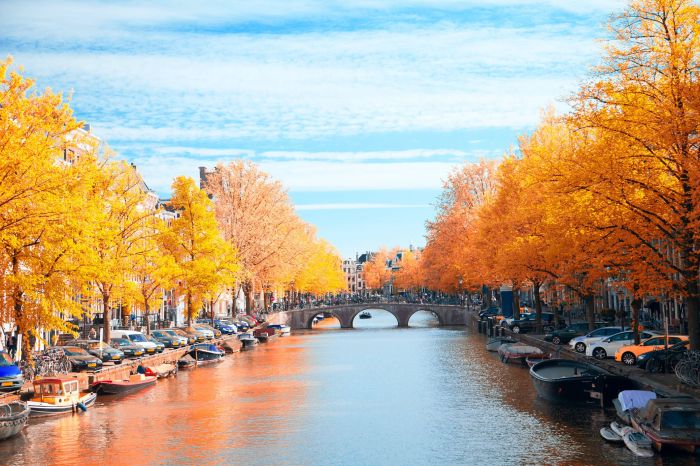
Weather forecasting in Amsterdam employs advanced numerical weather prediction models and data analysis techniques to predict future weather conditions. These models incorporate various atmospheric data, including temperature, humidity, wind speed and direction, and precipitation patterns, to simulate weather systems and predict their evolution over time.
Accuracy of Weather Forecasts, Amsterdam weather
The accuracy of weather forecasts in Amsterdam generally depends on the time frame and the specific weather parameters being predicted. Short-term forecasts (up to a few days) tend to be more accurate than long-term forecasts (over a week or more), as atmospheric conditions can change rapidly and become less predictable over longer time scales.
Temperature and precipitation forecasts are typically more accurate than wind speed and direction forecasts, especially during stable weather conditions. However, forecasts can become less reliable during periods of rapid weather changes, such as during the transition between seasons or when weather fronts are passing through.
Impact of Weather Forecasts on Daily Life
Accurate weather forecasts play a crucial role in daily life and decision-making for Amsterdam’s residents and visitors. They provide valuable information for planning outdoor activities, transportation, and even health precautions. For example, knowing about upcoming rain or storms can help people decide whether to carry an umbrella or postpone outdoor events.
Weather forecasts also have significant implications for various industries, such as agriculture, tourism, and transportation. Farmers rely on forecasts to plan crop planting and harvesting schedules, while businesses in the tourism sector use them to anticipate visitor numbers and plan accordingly.
The weather in Amsterdam can be unpredictable, with rain and sunshine often occurring within the same day. However, there’s no better way to experience the city’s charm than from a rooftop bar like the 230 fifth rooftop bar. With panoramic views of the city and a stylish atmosphere, it’s the perfect spot to escape the bustling streets and enjoy a cocktail or two.
Afterwards, you can head back down to explore the city’s canals and museums, making the most of the ever-changing Amsterdam weather.
Weather-Related Activities and Impact
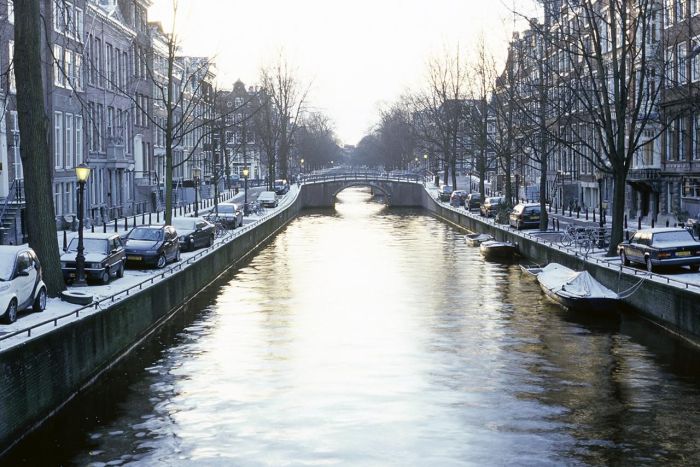
Amsterdam’s weather plays a significant role in shaping its cultural and recreational landscape. From its picturesque canals to its vibrant nightlife, the city offers a diverse range of weather-related activities and attractions.
The impact of weather on Amsterdam’s tourism, transportation, and other sectors is undeniable. Sunny days draw large crowds to outdoor markets, parks, and terraces, while rainy weather encourages indoor activities such as museum visits and cozy cafe experiences.
Popular Weather-Related Activities and Attractions
- Canal Cruises: Amsterdam’s iconic canals provide a unique perspective of the city, with boat tours offering shelter from the rain and sun.
- Outdoor Markets: Albert Cuypmarkt and Waterloopleinmarkt are popular open-air markets where visitors can browse a variety of goods, from antiques to fresh produce.
- Vondelpark: This sprawling green space is a haven for locals and tourists alike, offering opportunities for picnics, cycling, and relaxation.
- Heineken Experience: The interactive Heineken brewery tour offers a behind-the-scenes look at the world-famous beer, with indoor and outdoor components.
- Anne Frank House: This poignant museum tells the story of Anne Frank and her family during the Holocaust, providing a sobering yet important experience.
Impact on Tourism, Transportation, and Other Sectors
Weather conditions can have a significant impact on tourism in Amsterdam. During the summer months, the city experiences an influx of visitors seeking warm weather and outdoor activities. However, heavy rainfall can lead to a decline in tourism, as visitors may choose to stay indoors or travel to other destinations.
Transportation can also be affected by weather. Heavy snow or ice can disrupt public transportation, making it difficult for residents and tourists to get around. In contrast, clear weather conditions encourage walking, cycling, and other forms of active transportation.
Weather conditions can also impact other sectors, such as retail and hospitality. Sunny days tend to boost sales at outdoor cafes and restaurants, while rainy weather can lead to a decline in foot traffic and spending.
Cultural and Social Aspects of Weather
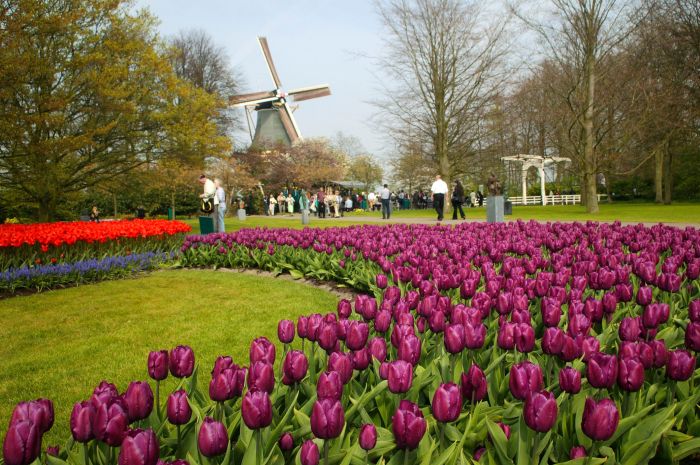
In Amsterdam, the weather is not merely a meteorological phenomenon but a cultural force that shapes traditions, customs, and social interactions.
Amsterdam’s weather can be unpredictable, but the city’s vibrant cultural scene more than makes up for it. From the world-renowned best cultural festivals worldwide to cozy cafes and charming canals, Amsterdam offers a unique blend of culture and atmosphere. Even when the weather is less than ideal, there’s always something to keep you entertained and engaged in this captivating city.
The city’s maritime climate, characterized by mild winters and cool summers, has played a pivotal role in shaping the city’s identity. The unpredictable nature of the weather has fostered a sense of resilience and adaptability among the locals, who have learned to embrace the ever-changing conditions.
Weather and Traditions
The weather is deeply intertwined with Amsterdam’s traditions. The annual “Keukenhof” flower festival, held in the spring, celebrates the arrival of warmer weather and the blooming of millions of tulips, daffodils, and hyacinths. The festival attracts visitors from around the world, who come to witness the vibrant colors and sweet fragrances of the flower fields.
Weather and Customs
The weather also influences local customs. The “grachtengordel,” or canal belt, is a UNESCO World Heritage Site that is a popular destination for tourists and locals alike. When the weather is warm, the canals become a hive of activity, with people boating, swimming, and enjoying picnics along the banks.
Weather and Social Interactions
The weather can also influence social interactions. During the summer months, when the sun is shining, people tend to be more outgoing and sociable. They gather in parks, cafes, and along the canals to enjoy the good weather and each other’s company.
Health and Well-being Implications
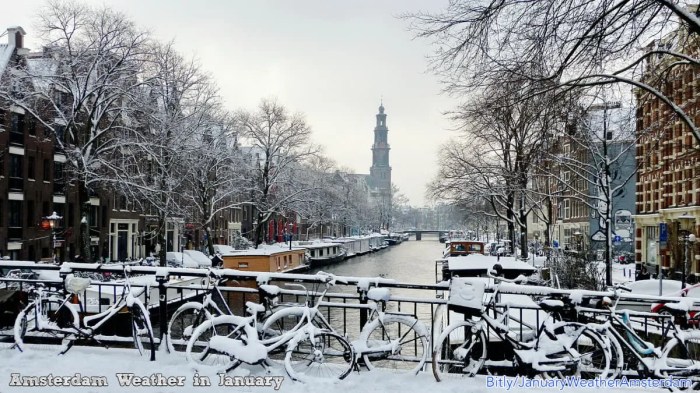
Amsterdam’s temperate oceanic climate generally supports good health and well-being. However, specific weather conditions can have both positive and negative effects on human health.
While exploring the remarkable accademia gallery in Florence, you may want to plan your visit around the weather. Just like in Amsterdam, the weather in Florence can be unpredictable, so checking the forecast before your trip is essential. While you may encounter rain or sunshine during your visit, the city’s charm and beauty will shine through regardless of the weather.
Mild temperatures and ample sunshine during spring and summer promote outdoor activities, improving mood and physical fitness. However, excessive heat during heatwaves can lead to heat exhaustion, heat stroke, and respiratory issues, especially for vulnerable populations like the elderly and those with chronic conditions.
Physical Health
- Cold and flu: Damp and cold weather during autumn and winter can increase the risk of respiratory infections, such as the common cold and flu.
- Asthma and allergies: High pollen counts during spring and summer can trigger asthma and allergy symptoms.
- Cardiovascular disease: Extreme temperatures, both hot and cold, can put stress on the cardiovascular system, increasing the risk of heart attacks and strokes.
Mental Health
- Seasonal Affective Disorder (SAD): The lack of sunlight during winter months can contribute to SAD, a type of depression that affects mood and energy levels.
- Anxiety and stress: Unpredictable weather, such as sudden storms or prolonged periods of rain, can trigger anxiety and stress in some individuals.
Tips for Staying Healthy
- Stay hydrated: Drink plenty of fluids, especially during hot weather.
- Protect yourself from the sun: Wear sunscreen and sunglasses when outdoors.
- Dress appropriately: Wear layers during cold weather and loose, breathable clothing during hot weather.
- Be aware of weather forecasts: Plan outdoor activities accordingly and take precautions during extreme weather conditions.
Weather Data Visualization and Representation

Visualizing weather data helps us understand patterns, trends, and anomalies more effectively. Interactive tables, infographics, and blockquotes can enhance data presentation and highlight crucial weather-related information.
Interactive HTML Table
An interactive HTML table allows users to filter and sort historical weather data based on parameters like date, temperature, humidity, and precipitation. This enables quick and easy identification of extreme weather events, seasonal variations, and long-term trends.
Visually Appealing Infographic
An infographic is a visually engaging representation of key weather patterns, such as temperature distributions, wind directions, and precipitation amounts. It provides a comprehensive overview of weather conditions in a specific region or over a period of time.
Blockquotes for Weather-Related Facts
Blockquotes can be used to emphasize important weather-related facts or anecdotes. For example:
The average annual temperature in Amsterdam is 11.2°C (52.2°F).
Weather-Inspired Art and Literature
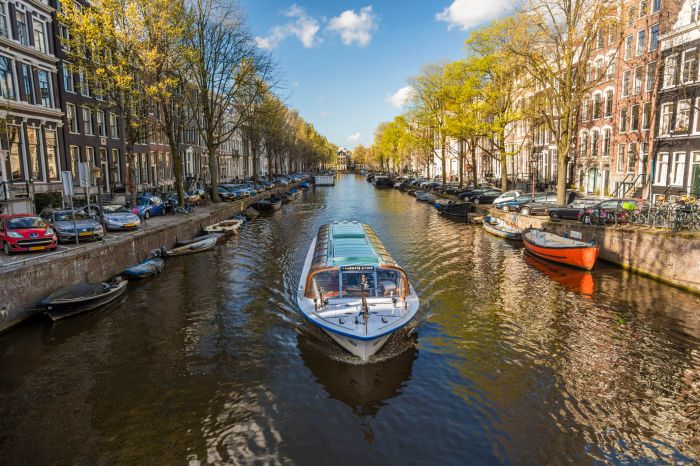
Amsterdam’s unique weather conditions have profoundly influenced the city’s artistic and literary landscape. From the evocative paintings of the Dutch Golden Age to the poignant prose of contemporary authors, the city’s weather has been a constant source of inspiration and a potent symbol.
Depictions of Weather in Art
- Golden Age Paintings: Artists like Rembrandt and Vermeer masterfully captured the atmospheric effects of Amsterdam’s weather, with soft, diffused light and dramatic chiaroscuro. Their works depict the city’s canals, streets, and interiors bathed in a range of weather conditions, from sunny days to stormy nights.
- Impressionist Photography: In the late 19th century, photographers like George Hendrik Breitner used the new medium to document the city’s fleeting weather patterns. Their photographs capture the play of light and shadow on Amsterdam’s buildings and canals, conveying the city’s ever-changing atmosphere.
- Contemporary Art: Modern artists continue to draw inspiration from Amsterdam’s weather. Installations, sculptures, and paintings explore the city’s relationship with water, wind, and light. These works often reflect on the city’s vulnerability to climate change and the importance of environmental sustainability.
Weather as a Symbol in Literature
- Romantic Poetry: Romantic poets like P.C. Hooft and Joost van den Vondel used weather as a metaphor for human emotions. Storms and tempests represented inner turmoil, while sunshine and clear skies symbolized hope and tranquility.
- Realist Novels: In the 19th century, realist writers like Multatuli and Louis Couperus portrayed the harsh realities of life in Amsterdam’s working-class neighborhoods. Their works often depicted the city’s oppressive weather conditions as a reflection of the social and economic struggles faced by the inhabitants.
- Contemporary Fiction: Contemporary authors like Tommy Wieringa and Margriet de Moor continue to explore the psychological and emotional effects of Amsterdam’s weather on its residents. Their works often depict the city as a place where the weather mirrors the characters’ inner states.
Last Recap: Amsterdam Weather

In conclusion, Amsterdam’s weather is an ever-changing force that shapes the city’s character, influences its culture, and impacts the lives of its inhabitants. Understanding this complex relationship empowers us to appreciate the beauty and challenges that Amsterdam’s weather brings, and to adapt accordingly.
Top FAQs
What is the average temperature in Amsterdam?
The average annual temperature in Amsterdam is 10.5°C (50.9°F).
What is the rainiest month in Amsterdam?
December is the rainiest month in Amsterdam, with an average of 75 mm (2.95 inches) of rainfall.
How accurate are weather forecasts in Amsterdam?
Weather forecasts in Amsterdam are generally accurate, especially for the next 24-48 hours. However, long-term forecasts may be less reliable.